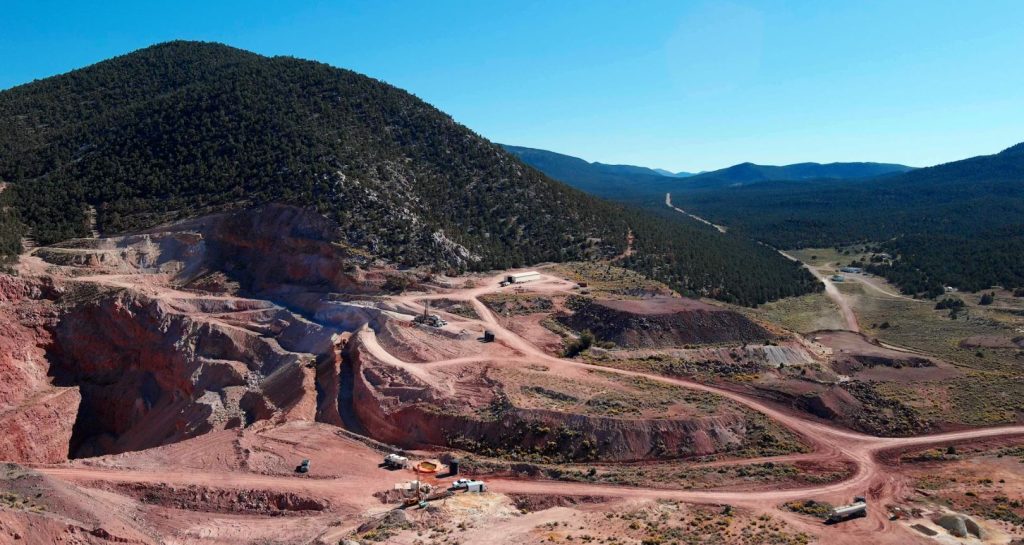Nevada King Gold drills 363 g/t silver over 33.5 metres at Atlanta mine project, Nevada

Nevada King Gold Corp. [NKO-TSXV; NKGFF-OTCQX] reported assay results from nine vertical reverse circulation holes recently completed at its Atlanta gold mine project, located 264 km northeast of Las Vegas, Nevada, in the prolific Battle Mountain trend.
Drill hole AT22HG-18 returned 33.5 metres of 2.35 g/t gold and 363 g/t silver, including 10.7 metres of 5.27 g/t Au, and 1,084.1 g/t Ag. AT22NS-50 returned 18.3 metres of 3.68 g/t Au and 27.1 g/t Ag, including 6.1 metres of 7.09 g/t Au and 33.1 g/t Ag. AT22NS-47 returned 25.9 metres of 2.04 g/t Au and 27.8 g/t Ag. AT22NS-49 returned 25.9 metres of 3.73 g/t Au and 46.1 g/t Ag, including 7.6 metres of 6.33 g/t Au and 28.8 g/t Ag.
Selected highlight intervals released today all average greater than two grams per tonne gold and contain significant silver intervals, including 1,084 g/t Ag over 10.7 metres in hole AT22HG-18.
Today’s holes on Section 22-10N were drilled across the 150 m wide, high-grade feeder zone comprising the Atlanta mine fault zone (AMFZ), which lies between the East Atlanta and West Atlanta faults. These vertical holes continue to advance northward to the high-grade gold mineralization concentrated along a series of subparallel, fault-bounded graben blocks previously identified and reported to the south in sections 22-5N through 22-9N.
The high-grade silver intercept in AT22HG-18 occurs along the western side of the West Atlanta fault on the eastern edge of a 150-metre wide mineralized zone now identified as the West Atlanta graben target. This down-dropped block hosts thick mineralization within the volcanic section above the contact with the basal Eureka quartzite unit. AT22HG-18 intercepted 1,084 g/t Ag over 10.7 metres within 33.5 metres of 2.35 g/t Au and 363.0 g/t Ag, and bottomed in mineralization at 291.2 metres depth, where it was lost in a strongly fractured zone.
Compared with nearby historical holes, the company’s vertical holes returned higher gold grades. For example, angle hole AR-2 returned 22.9 metres at 1.72 g/t Au, while Nevada King’s AT23NS-50 returned 18.3 metres at 3.68 g/t Au. Farther east, angle RC hole KR97-4 reported 29 metres grading 0.81 g/t Au, while AT22NS-89 returned 41.2 m at 0.94 g/t Au, and AT22NS-90 returned 39.7 metres at 0.82 g/t Au.
Calvin Herron, exploration manager, commented: “As our fence drilling progresses northward along the AMFZ, we see the same pattern of structural offsets and styles of mineralization repeated from previous fences. To date, the lateral continuity in both gold grade and thickness is fairly uniform all along the southern third portion (approximately 160 metres) of the AMFZ. Unexpectedly and astonishingly, this section also hosts a thick and very-high-grade silver intercept, returning over 1,000 g/t Ag over 10.7 metres within a 33.5 metres zone averaging over 360 g/t Ag in hole AT22HG-18. There are no historical drill intercepts of this tenor anywhere near this part of the property. AT22HG-18 drilled into the eastern margin of the west graben target, very close to the West Atlanta fault, which may account for the high silver grade.”
District-scale projects in Nevada King’s portfolio include the 100%-owned Atlanta mine, located 100 km southeast of Ely, the Lewis and Horse Mountain-Mill Creek projects, both located between Nevada Gold Mines’ large Phoenix and Pipeline mines, and the Iron Point project, located 35 km east of Winnemucca, Nevada.
